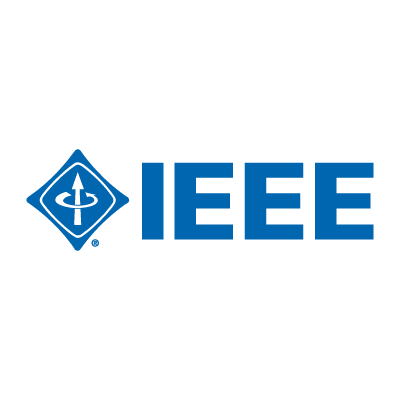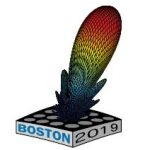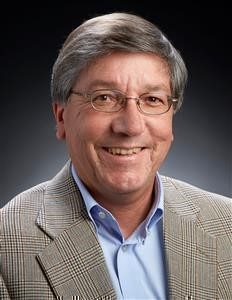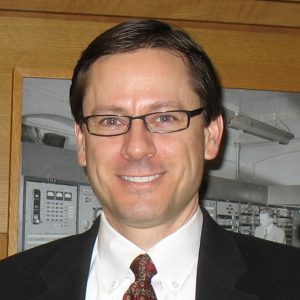
2019 IEEE International Symposium on Phased Array Systems and Technology
October 15 – 18, 2019, Waltham, MA USA

Tutorial: Digital Arrays
October 15, 2019 – 8:00 a.m. – 12:00 noon
Instructors:
Dr. Caleb Fulton, Oklahoma University
Dr. Salvador Talisa, Johns Hopkins University, APL
Dr. Mark Yeary, Oklahoma University
Abstract: Recent years have seen the advancement of digital phased array technology, through various demonstrators/testbeds and early fielded systems, to the point that digital phased array systems are ready for use in a wide variety of applications and frequencies, from radar and electronic warfare to 5G communications and satellite links. These systems promise to deliver advanced capabilities, such as enhanced dynamic range, full MIMO capability, arbitrary and even ubiquitous formation of multiple receive beams, scalability and modularity, longevity through standardization / commoditization of functions, and more. At the same time, they introduce new challenges to system integration associated with cost, packaging, synchronization/calibration, processing, and understanding of a much more complicated trade spaces in dynamic range, control, calibration, synchronization, etc. On the backend, these future sensors begin to resemble present-day data and server farms, with aggregate data rates approaching tens of Tbps and individual channels running more than 10 Gbps, creating as much (if not more) of a computer engineering challenge as they do in the frontend packaging and integration of element-level digital transceivers.
This tutorial will briefly delve into the history of digital phased array development, ultimately summarizing work that has been performed on a number of recent testbeds and small-scale demonstrators. A generic data routing and processing framework will be covered, commenting on how equalization, adaptive beamforming, and multi-beam clustering are typically accomplished in modern architectures. The tutorial will also discuss dynamic range scaling and comparison to analog arrays, advanced calibration challenges and opportunities, future trends in applications and CSWAP reduction, and other similar topics of interest such as applications for dual/arbitrary polarization beyond weather radar and satellite communications. Finally, the presenters will highlight current development efforts towards larger-scale demonstrators and testbeds that will be used for furthering the engineering science behind these exciting research topics.

Dr. Caleb Fulton (S’05-M’11-S’16) received his B.S. and Ph.D. in ECE from Purdue University in West Lafayette, IN, in 2006 and 2011, respectively, and is now an Associate Professor in ECE at the University of Oklahoma’s Advanced Radar Research Center in Norman, OK. His work focuses on antenna design, digital phased array calibration and compensation for transceiver errors, calibration for high-quality polarimetric radar measurements, integration of low-complexity transceivers and high-power GaN devices, and advanced digital beamforming design considerations. He is currently involved in a number of digital phased array research and development efforts for a variety of applications. He received the Purdue University Eaton Alumni Award for Design Excellence In 2009 for his work on the Army Digital Array Radar (DAR) Project. He also received the Meritorious Paper Award for a summary of these efforts at the 2010 Government Microcircuit Applications and Critical Technologies Conference. More recently, he received a 2015 DARPA Young Faculty Award for his ongoing digital phased array research. Dr. Fulton is a member of the IEEE Antennas and Propagation, Aerospace and Electronic Systems, and Microwave Theory and Techniques Societies, and serves on the Education Committee of the latter.

Dr. Salvador H. Talisa is a member of the Principal Professional Staff and Chief Scientist of the Radar and Electronic Warfare Systems Development Group at The Johns Hopkins University Applied Physics Laboratory. His recent work is focused on advanced radar systems and technology, including digital arrays, signal processing and front-end transmit electronics. He has conducted research on microwave magnetic, magneto-optic and microwave superconducting devices and materials at the Westinghouse (later Northrop Grumman) Science and Technology Center in Pittsburgh. He later transferred to the Northrop Grumman Electronic Sensors and Systems near Baltimore, where he was a program and business development manager for radar receiver and exciter technology. Dr. Talisa is a Life Senior Member of the IEEE and holds a Telecommunications Engineering degree from the Polytechnic University of Catalonia in Barcelona, Spain, and M.Sc. and Ph.D. degrees in Electrical Engineering from Brown University. He has authored and co-authored more than 60 articles and was awarded 7 patents.

Dr. Mark Yeary graduated with his Ph.D. in Electrical Engineering from Texas A&M University in 1999. He is a founding member of Advanced Radar Research Center (ARRC) at the University of Oklahoma (OU) in Norman, OK and was named a Hudson-Torchmark Presidential Professor in 2011. His research interests are in the areas of digital signal processing (DSP) as applied to customized DSP systems, and instrumentation for radar systems with an emphasis on hardware prototype development. He has authored or co-authored 250+ conference papers, conference abstracts and journal papers in these areas. From 2003 to 2016, he was heavily involved in the SPY-1A phased array project at the National Weather Radar Testbed (NWRT) in Norman, OK when this radar was operational. He was a performer on the DARPA ACT program with the Rockwell-Collins team, 2013-2017. He is currently a teammate on the ARRC’s S-band all-digital mobile phased array radar program known as Horus. Dr. Yeary was General Co-Chair of the 2018 IEEE Radar Conference held in Oklahoma City. He is a licensed Professional Engineer (PE) and IEEE Fellow.